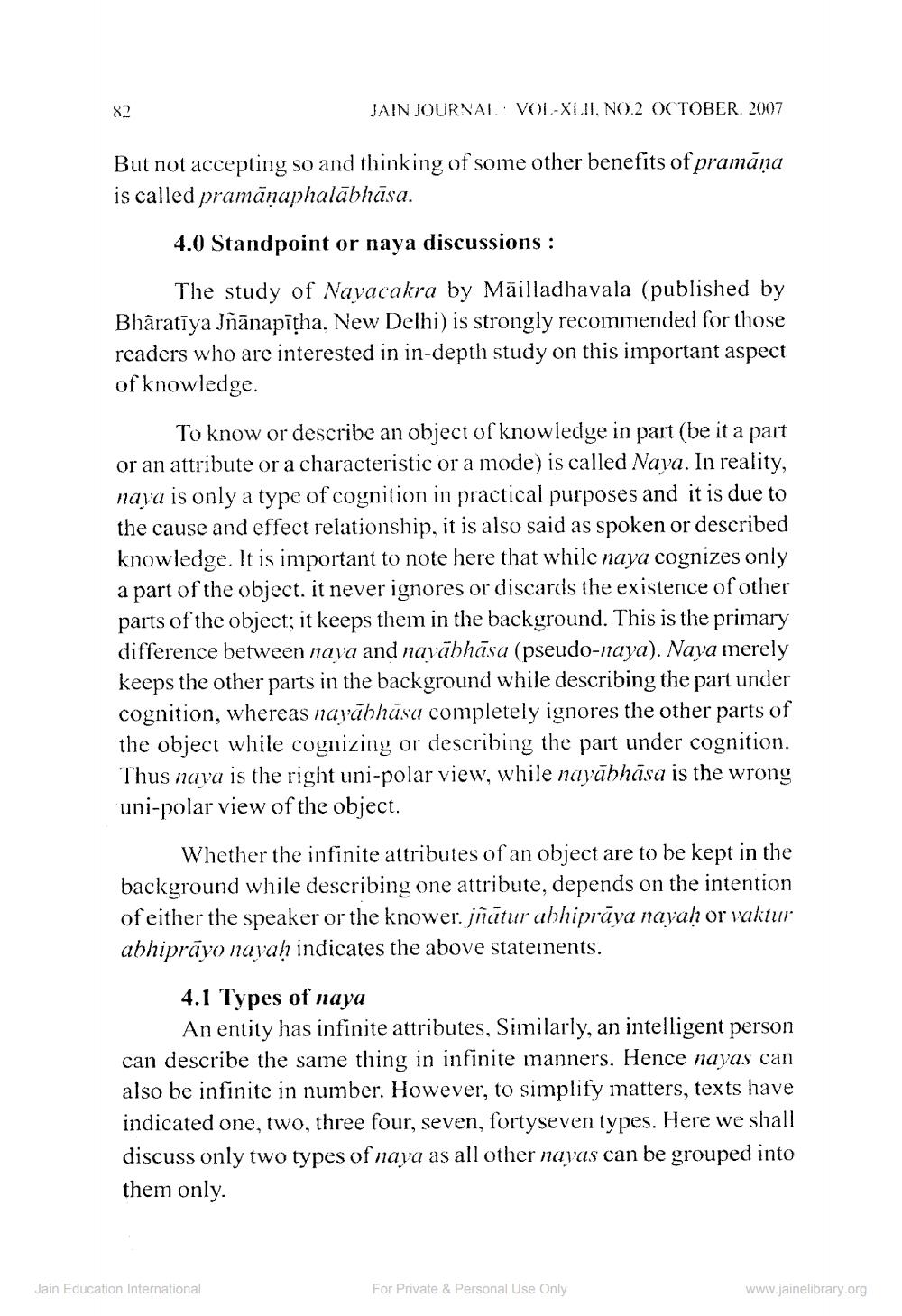________________
82
JAIN JOURNAL VOL-XLII, NO.2 OCTOBER. 2007
But not accepting so and thinking of some other benefits of pramāņa is called pramāṇaphalābhāsa.
4.0 Standpoint or naya discussions :
The study of Nayacakra by Mailladhavala (published by Bharatiya Jñānapīṭha, New Delhi) is strongly recommended for those readers who are interested in in-depth study on this important aspect of knowledge.
To know or describe an object of knowledge in part (be it a part or an attribute or a characteristic or a mode) is called Naya. In reality, naya is only a type of cognition in practical purposes and it is due to the cause and effect relationship, it is also said as spoken or described knowledge. It is important to note here that while naya cognizes only a part of the object. it never ignores or discards the existence of other parts of the object; it keeps them in the background. This is the primary difference between naya and nayabhāsa (pseudo-naya). Naya merely keeps the other parts in the background while describing the part under cognition, whereas nayābhāsa completely ignores the other parts of the object while cognizing or describing the part under cognition. Thus naya is the right uni-polar view, while nayabhasa is the wrong uni-polar view of the object.
Whether the infinite attributes of an object are to be kept in the background while describing one attribute, depends on the intention of either the speaker or the knower. jñātur abhiprāya nayaḥ or vaktur abhiprayo nayah indicates the above statements.
4.1 Types of naya
An entity has infinite attributes, Similarly, an intelligent person can describe the same thing in infinite manners. Hence nayas can also be infinite in number. However, to simplify matters, texts have indicated one, two, three four, seven, fortyseven types. Here we shall discuss only two types of naya as all other nayas can be grouped into them only.
Jain Education International
For Private & Personal Use Only
www.jainelibrary.org




